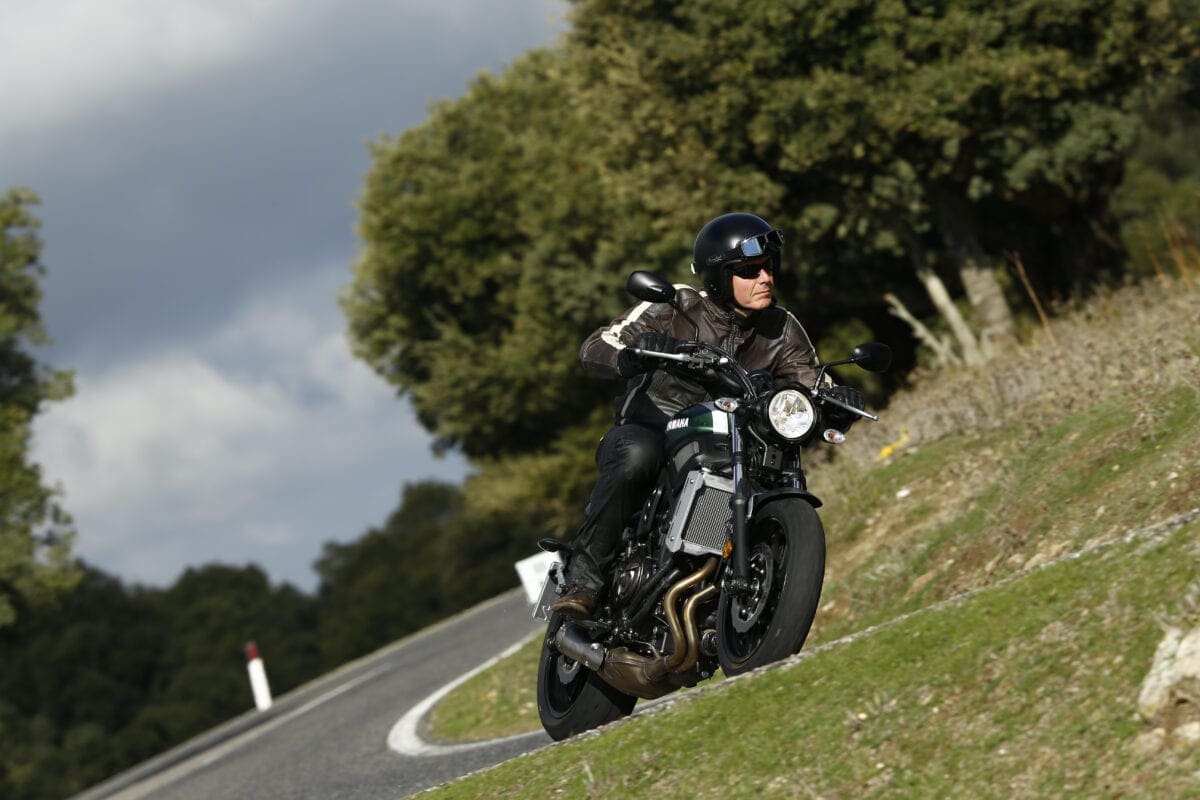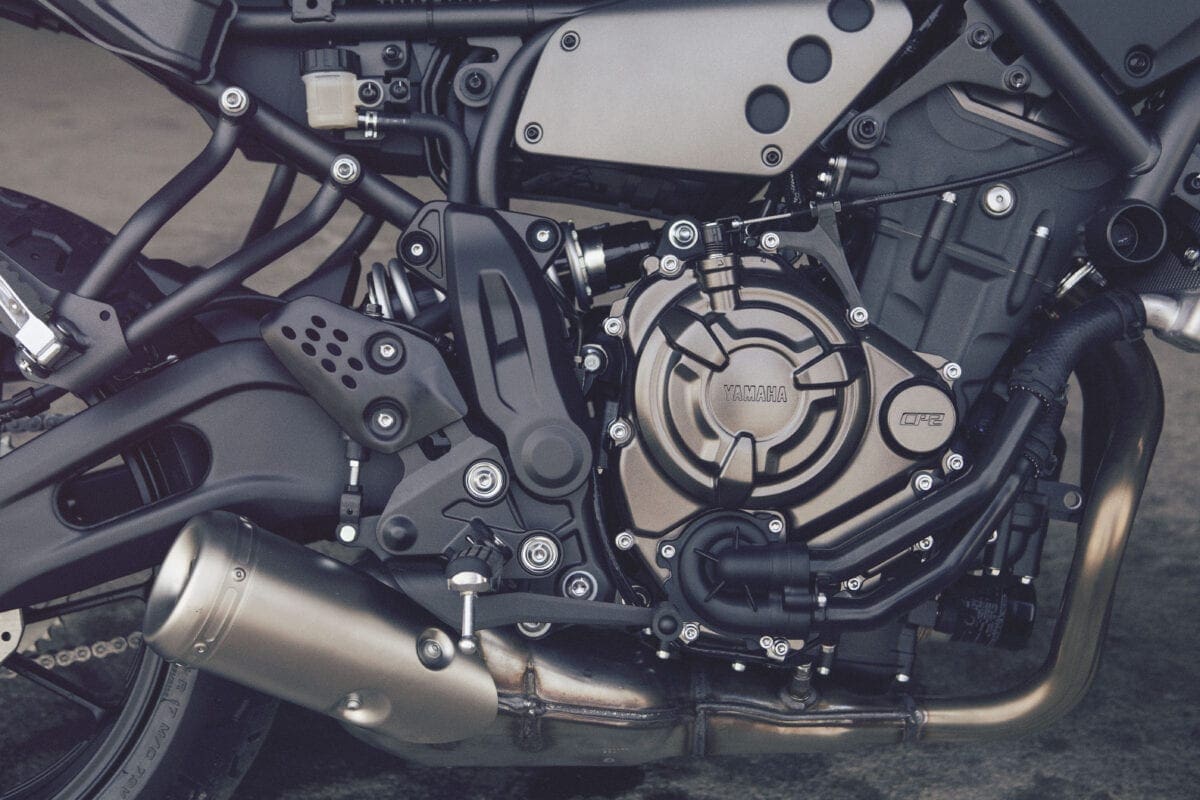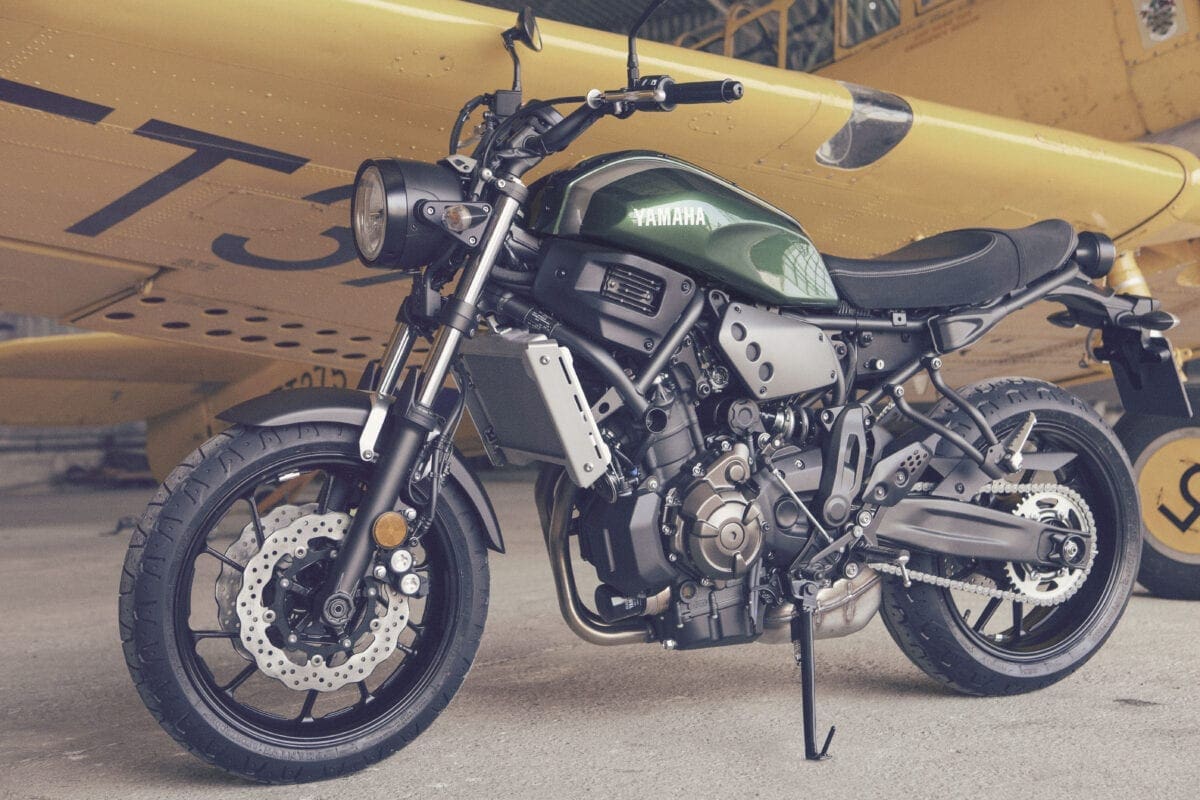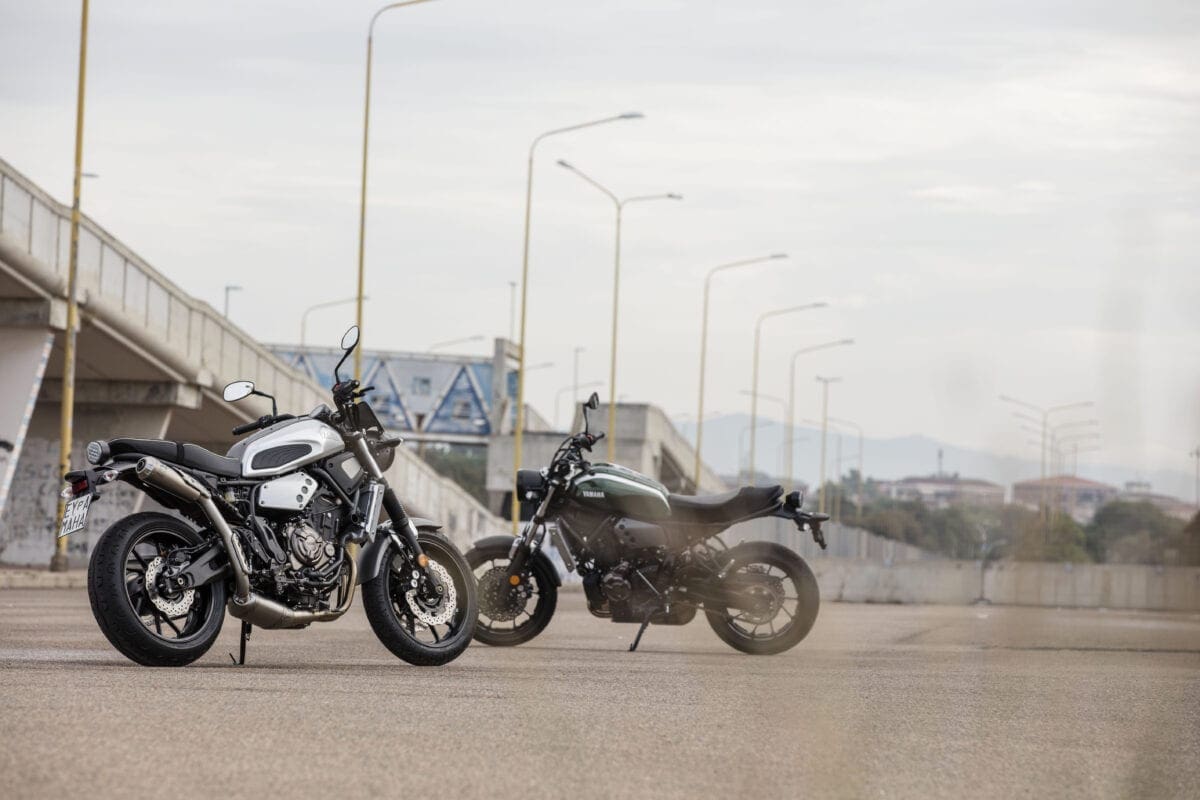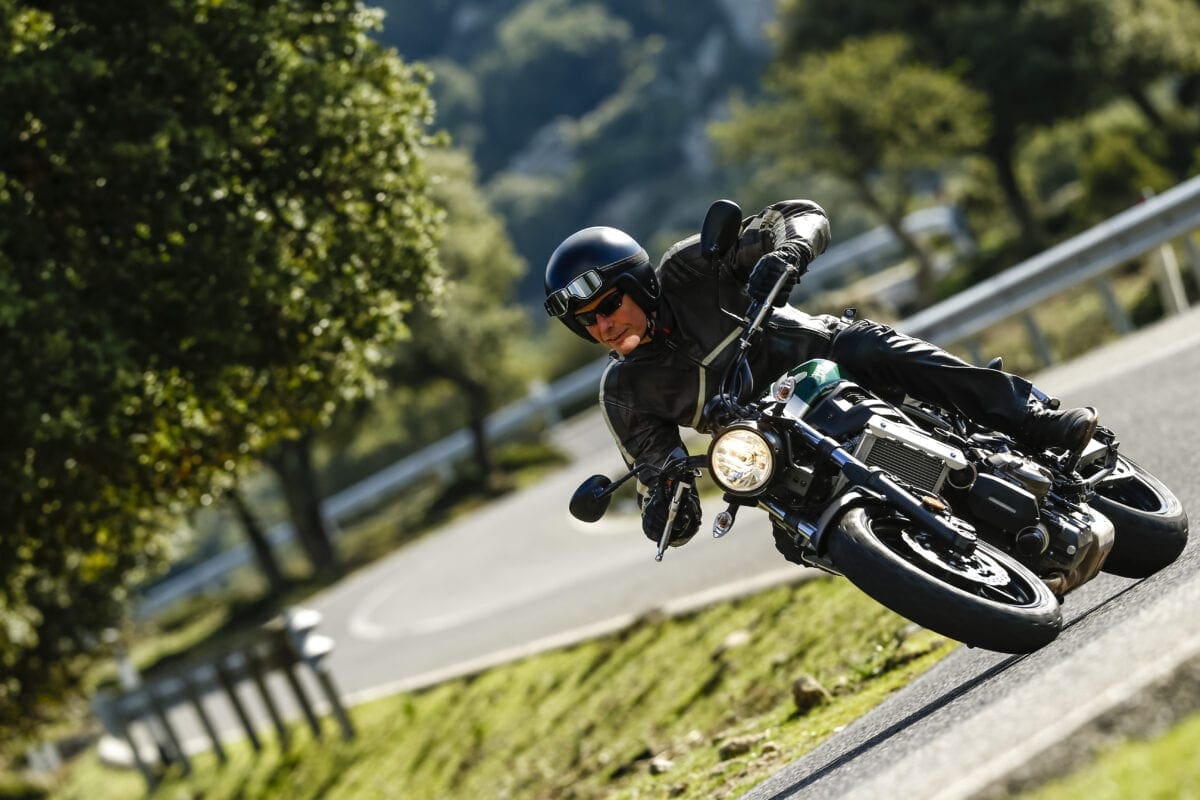Tested by Roland Brown
The XSR700 must be one of the most logical new bikes for years. After all, Yamaha’s recent revival began with light, sporty roadsters such as the MT-07 and MT-09, in combination with the retro-themed Sport Heritage range in which old models such as the XJR1300 were revamped to ride the current retro wave.
For the next step what could make more sense than reshaping one of the new-generation stars in a way that recalls an old favourite, hopefully getting the best of both worlds – modern performance and retro image – as a result? Better still, why not do all that and tap into the current craze for customising at the same time, as Ducati has with the Scrambler?
Yamaha came up with an ideal name for this new family: Faster Sons. And they didn’t need to look far for inspiration. Few current stars shine as brightly as the MT-07, which is topping sales charts worldwide thanks to its lively parallel-twin engine, lightweight chassis and ultra-keen price. And Yamaha’s first big bike was a twin of similar capacity: the 654cc XS-1 that was launched in 1969 and led to a successful string of XS650 models in the Seventies.
Tell Me About the Engine
It’s taken straight from the MT-07, which means that it’s a 689cc, liquid-cooled parallel twin with twin overhead cams and four valves per cylinder. That capacity, from dimensions of 80 x 68.6mm, was originally chosen not to fit into an existing market division but because Yamaha’s engineers decided it gave an optimum balance between power, torque and economy.
If anything, the emphasis is on flexibility and midrange grunt. The peak output of 74bhp at 9000rpm is not especially high for a near-700cc twin but there’s a broad spread of torque that peaks at just 6500rpm. The XSR’s only significant engine-related change is a new exhaust system that is designed to give a richer sound as well as conform with Euro 4 emissions standards.
What’s the Chassis Like?
The XSR’s chassis layout also follows the MT’s closely, which means that it’s based on a tubular steel frame that saves weight by using the engine as a stressed member. But there are a number of differences aimed at adding retro style and making the bike easier to customise, starting with the bolt-on rear subframe that allows the bike to be converted to single-seat very quickly. Yamaha admit they borrowed the idea from BMW’s R nine T.
Suspension is taken straight from the MT and is fairly basic, combining 41mm with a near-horizontal rear shock whose adjustable preload gives the only set-up option at either end. Brakes are also shared, which means wavy discs and four-piston calipers up front, and so are the 17-inch wheels although they differ by wearing Pirelli Phantom Sportscomp tyres, the rear an unchanged 180-section, to give a period look.
Other changes include the one-piece handlebar, which is wider and set slightly higher and further back; and the seat, which is neatly made from two-tone leather, and at 815mm is 10mm higher than the MT’s.
Design features aimed at aiding customising include the fuel tank, which consists of a plastic container flanked by a pair of aluminium side-pieces, which screw on so can easily be swapped, like those of Ducati’s Scrambler. The headlight has also been designed for easy replacement, as has the front mudguard which bolts to an aluminium mount.
Should I Buy One?
If you fancy a quick, agile, sporty middleweight that is also very easy to ride, then why not? Especially if you like the XSR’s retro style, or are keen on a bit of light customisation using parts from Yamaha or the independent custom firms, such as Jens vom Brauck’s JvB-moto from Germany, that will be making a large selection of bolt-on bits.
At £6429 the XSR is very competitively priced, considerably cheaper than Ducati’s various Scrambler models and other retro-themed twins such as Moto Guzzi’s V7s and Triumph’s Bonneville. But it is worth pointing out that this bike costs £500 more than the ABS-equipped MT-07 whose engine and chassis layout it shares. If you’d be happy with a more modern looking bike, the cost saving could buy an aftermarket shock and fork spring kit that would make an already sweet-handling bike even better.
The XSR provides plenty of incentive to buy accessories. Yamaha are offering over 40 extras, ranging from a fly-screen and hand-guards, via a full Akrapovic high-level exhaust, to numerous pieces of leather luggage. And the Yard Built program will see numerous custom firms developing bikes and parts. Most prominent so far is Jens vom Brauck from Germany, who will be selling the key components from his classy Super7 custom.
So What’s It Like To Ride?
A real blast. Given the rave reviews that the MT-07 has been receiving since its introduction last year, it should come as no surprise to read that the XSR offers a similarly superb combination of punchy, powerful, smooth-revving engine and light, agile, manageable chassis. Add a pleasing twin-cylinder character and a restrained but slightly richer exhaust note, plus excellent ride quality and reasonable comfort by naked-bike standards, and the result is a bike that suits just about every rider and situation.
The engine’s flexibility makes the XSR very easy to ride, as do its light weight and generous steering lock. Like the MT it pulls crisply from low revs, then picks up the pace in the midrange, allowing overtaking with just a lazy twist of throttle in top, and no need to flick down through the sweet-shifting six-speed box. There’s enough torque to lift the front wheel equally effortlessly in first gear, but equally novices should feel perfectly at home.
There’s plenty of straight-line performance available if you use the revs, and the balancer-shaft equipped motor stays respectably smooth even as it nears the 10,000rpm redline. Top speed is around 120mph and the Yam is capable of cruising at 80mph plus, if your neck muscles and driving licence are. The upright riding position seemed comfortable enough, and I didn’t feel cramped despite being tall. Even the seat seemed pretty comfortable, though a pillion doesn’t get much to hold.
Chassis performance was equally impressive. The XSR weighs 4kg more than the MT (mainly due to the extra metal parts), but at 186kg with a full tank it’s still very light, right on par with Ducati’s Scrambler. That helps it feel very manoeuvrable at slow speed, and even short-legged riders shouldn’t have problems although the seat is reasonably high.
Suspension is good, considering the simplicity of the 41mm front forks and rising-rate rear monoshock, although like the MT the bike felt slightly soft and vague under hard cornering. A slightly firmer shock and a bit more damping wouldn’t go amiss, especially for heavier riders, but the Yam was so much fun that it’s hardly fair to complain. The only adjustment at either end is shock preload. Adding a few extra notches gave a usefully firmer feel and added to the respectably generous ground clearance.
The Phantoms gripped reassuringly well, even on damp Sardinian roads. Braking was excellent too, the front stopper giving notably more power than I recall the MT doing on its launch a year ago, despite its identical specification. The XSR comes with ABS as standard, and the system worked well, even allowing a slight stoppie on grippy roads.
The XSR should even be respectably practical, at least by naked middleweight standards. It shares the MT’s 14-litre fuel capacity, which isn’t especially generous but should mean a realistic range of about 130 miles, based on my launch average of 50mpg. Plenty of MT riders have been averaging 60mpg-plus, and getting 160 miles or more from a tankful.
The speedo’s digital display shows gear position and fuel consumption as well as incorporating a fuel gauge, though the display can’t be toggled from the slightly small and basic switchgear. The mirrors were sufficiently large and clear to be useful. The XSR is no sports-tourer but like the MT it should prove a perfectly capable all-rounder.
And it’s one with a distinct style and character all of its own. The XSR700 is just as superbly fast, entertaining and sweet-handling as the MT-07, should prove just as practical, and is almost as competitively priced while offering the bonus of easy customisation plus a splash of Yamaha heritage. Faster Sons is a very promising concept, and this first of the family looks like getting it off to a flying start.
Yamaha XSR700 test ride review: the real blast modern retro

